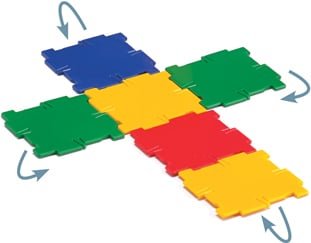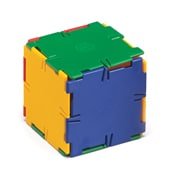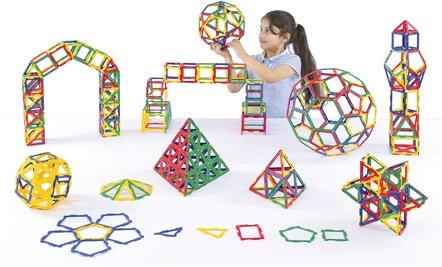• Geometry: 2D - 3D
Polydron is a geometric construction manipulative that allows students to create 2D nets that may be folded to create 3D objects. The hinging mechanism makes it simple for students to join the pieces together. The product was created by engineer and inventor Edward Harvey in the United Kingdom in the 1970s, and has steadily built into a firm favourite in the classroom.


Mathematical Language
2D net, 3D object, congruent, dodecahedron, hexahedron (cube), icosahedron, tetrahedron, octahedron, polyhedron (plural polyhedra), regular.
Using Polydron
Students can begin by exploring all of the shapes that can be made by joining 5 square pieces together to create pentominoes. Later students can try folding the pentominoes to create open top boxes. Students may then extend the idea to hexominoes (6 square pieces joined together).
Polydron is simple to understand, and easy to use, and once students start to utilise the product they will quickly see endless possibilities. Squares, triangles, hexagons and pentagons are all interconnecting, and this allows great versatility, from simple cubes and prisms. Students can soon progress to many more intriguing and complex forms.
Once students have mastered the joining and folding process, all of the other components (shapes) may be introduced and students may explore the 2D to 3D relationship much further. Students will soon be creating stellated dodecahedrons.




Typical Classroom Requirements
A class set:
– At least 6 squares per student plus a range of the other shapes. Polydron typically comes in kits suited to groups of students or full classes.
Support and Complementary Materials
The Polydron website contains many support cards and lessons which can be downloaded free of charge. In addition to this resource, there is a wealth of material available on YouTube that has been supplied by helpful teachers around the world who have obviously enjoyed using this valuable resource. Note that Polydron comes in solid form (see above) and skeletal form (see below).
